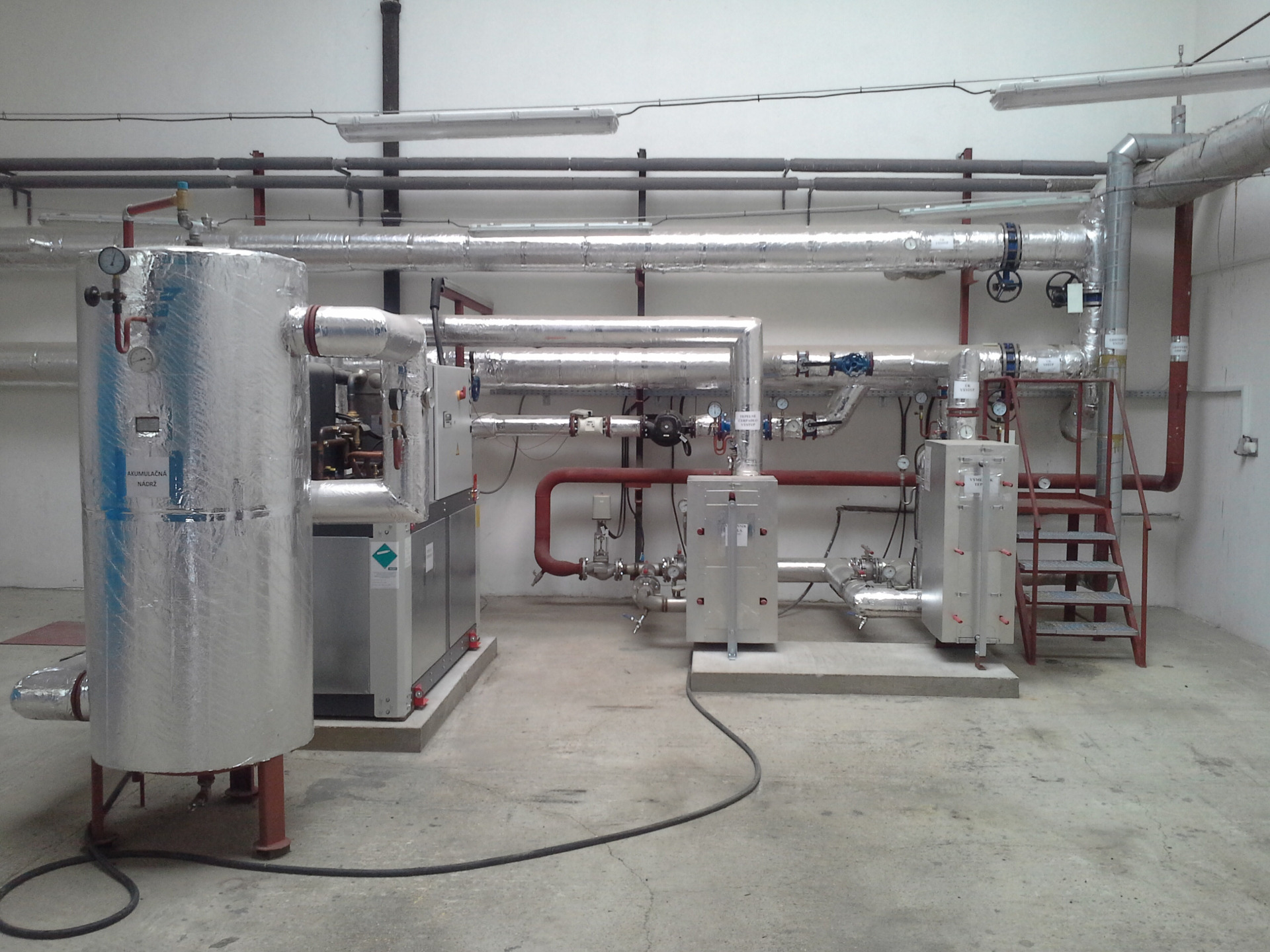Sered
Geothermal project in Sered

Town of Sered is situated in Danube lowland on the right side of Vah
river. From geological point of view it is clear that the town lies in
the prospective area for geothermal energy utilization. There are six
existing district heating system in the town, each with central boiler
plant and two-pipe hot water distribution network connecting to
apartment and puplic building in the surroundings. Based on most
convenient parameters (heat output and locality), boiler plant K5 was
chosen for geothermal energy usage.
Geothermal energy form new well SEG-1 with depth of 1 800 m will be used
for heat production in existing boiler plant K5. Geothermal water will
be pumped by electric submersible pump with variable speed controller.
Flow rate is 8 l/s and temperature 66°C. Water will be delivered via
pre-insulated pipe to a separator, where the free gases will be
released, and subsequently to a heat exchanger station situated in the
area of the boiler plant. After the utilization of thermal energy in
heat exchangers, geothermal water flows through plastic pipe into the
recipient, Vah river. Length of supply pipeline is approx 330 m and of
discharge pipeline 430 m.
Boiler plant K5 is central heat source supplying the heating hot water with design temperature gradient 90/70°, while the real value does not exceed 65/45°C. Primary two-pipe distribution network is connected to pressure dependent heat exchanger stations installed directly in supplied buildings (17 apartment buildings, 4 public buildings) with 960 apartments. Average annual heat production of K5 reaches approx. 39 000 GJ (10 833 MWh), while geothermal energy covers approx. 45%.
Two demountable plate heat exchangers made of titanium are
installed in geothermal heat exchanger station, the first of which with
0,85 MW heat output for direct return heating water warming and the
second with 0,4 MW for heat pump evaporator loop water warming. The heat
pump´s maximal heating output in given conditions is 547 kW. Total heat
output given into the system by geothermal energy and the heat pump is
1,4 MW.
Geothermal energy combined with the heat pump represents the base load heat source with the maximal working time throughout the year. The existing natural gas boilers are being used as a peak source or possibly as a backup source able to cover 100% of heat demand.
With respect to the parameters of geothermal resource and district
heating system, it is impossible to completely replace natural gas
usage. However, significant savings of such primary fossil fuel are
being reached which of course positively impacts the economy of the heat
plant operation. Environmental aspect in reducing CO2
emissions is also important. Geothermal energy, as one of the cleanest
and most stable renewable energy resources, covers 45% of overall annual
heat production of K5, while savings of 547 000 m3 of natural gas per year and CO2 emissions reduction of 1 078 ton per year are achieved.
The geothermal project in Sered together with recently implemented project in Sala demonstrate the economical and technical favorableness of reasonable and professionally solved geothermal projects, despites of lack of interest from the state.
